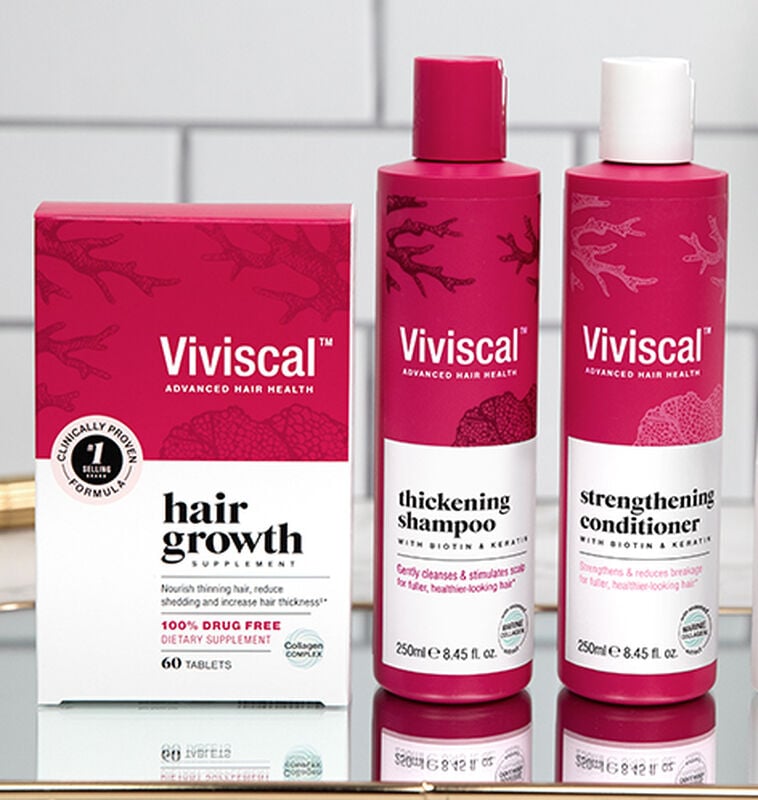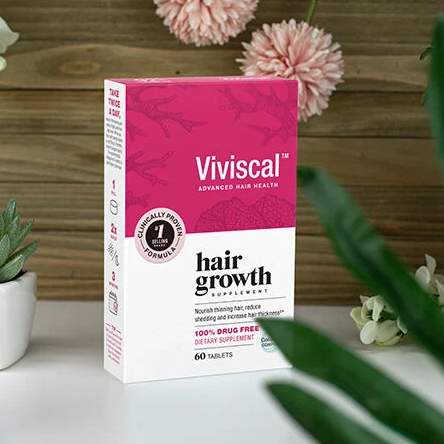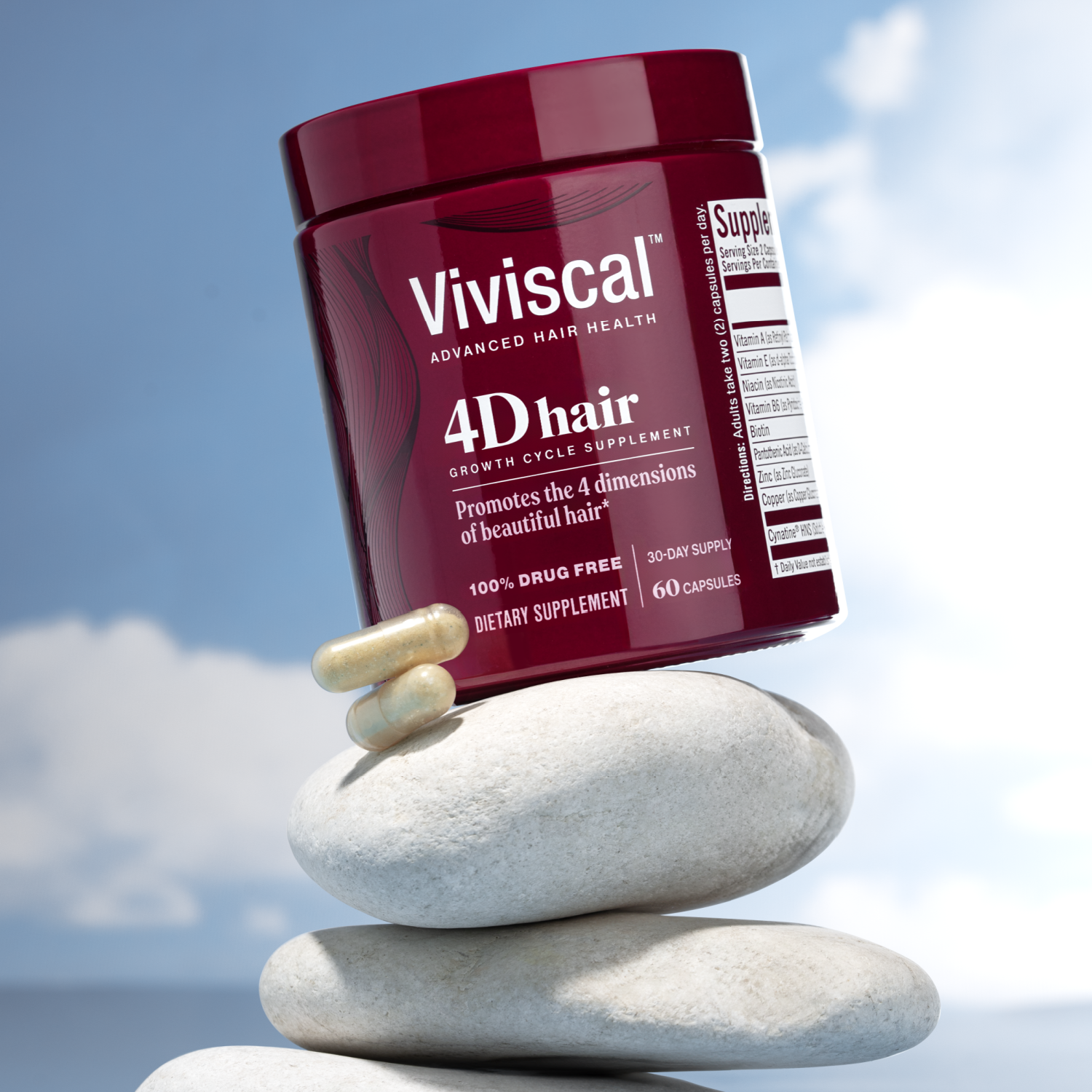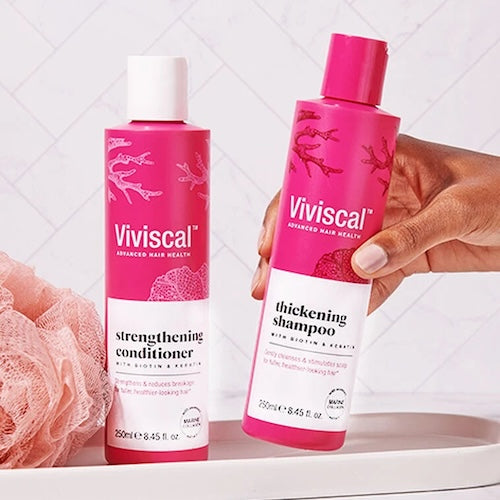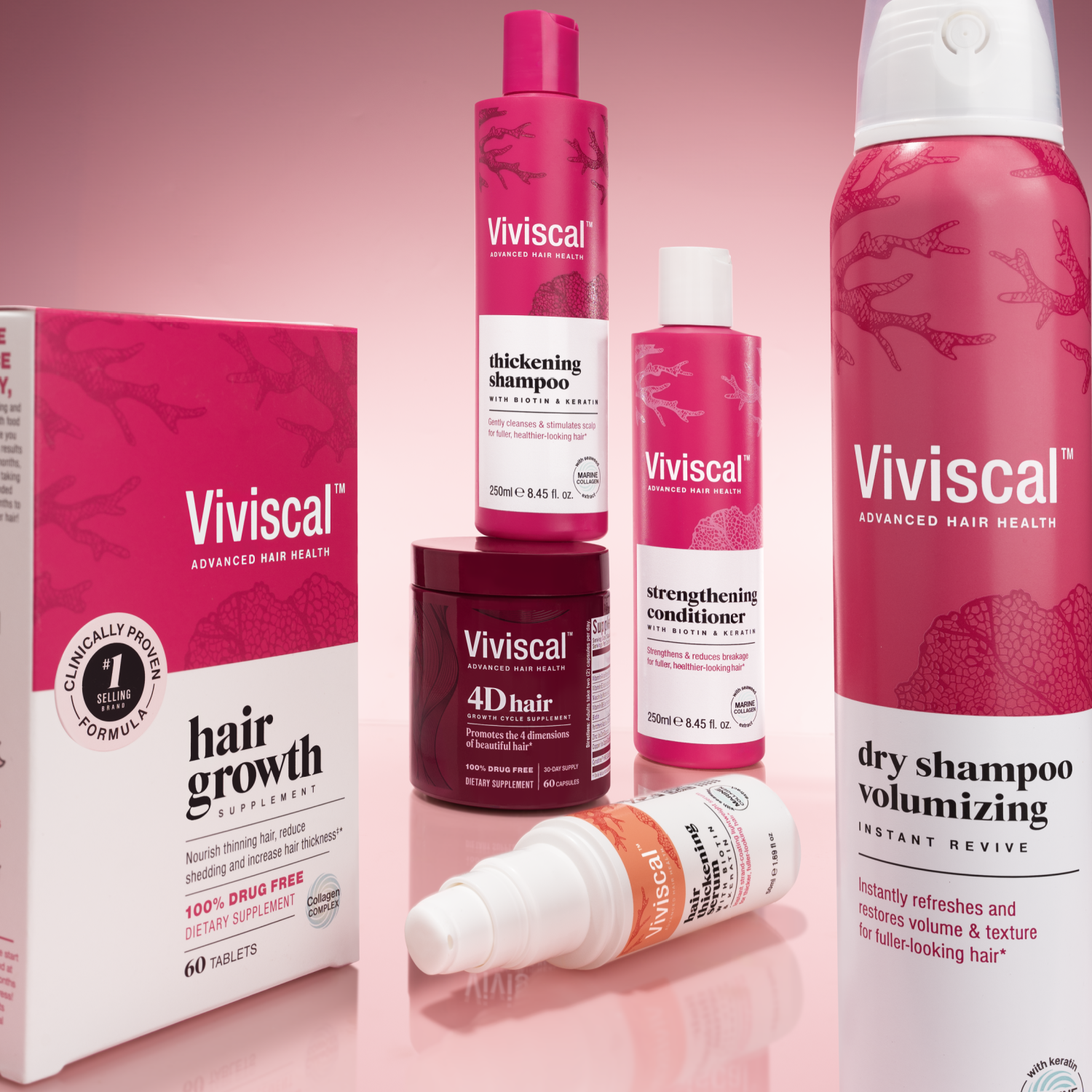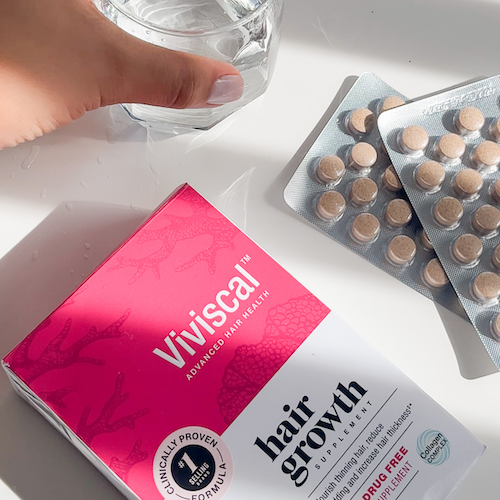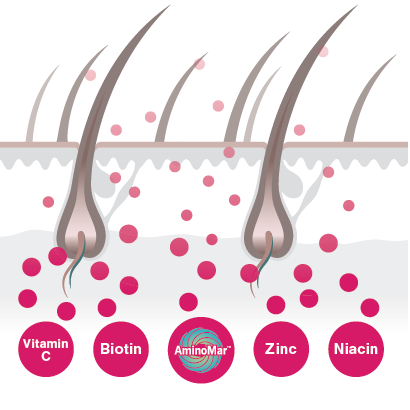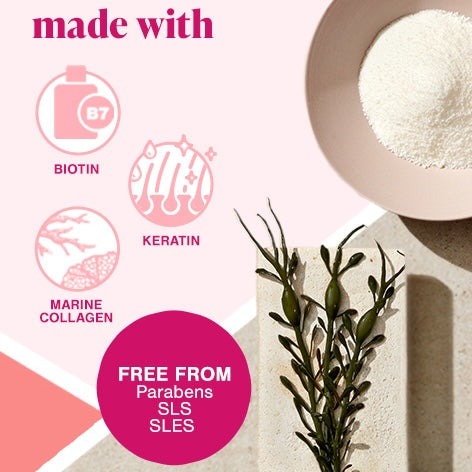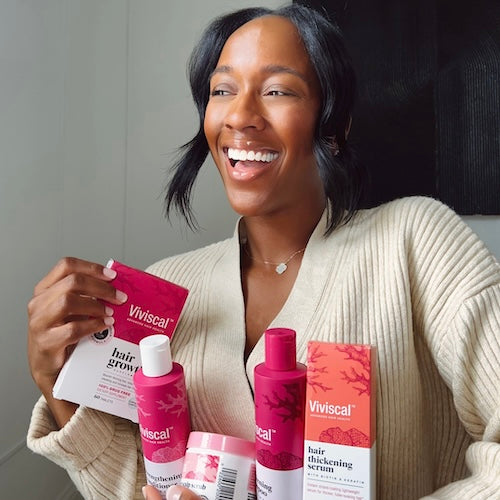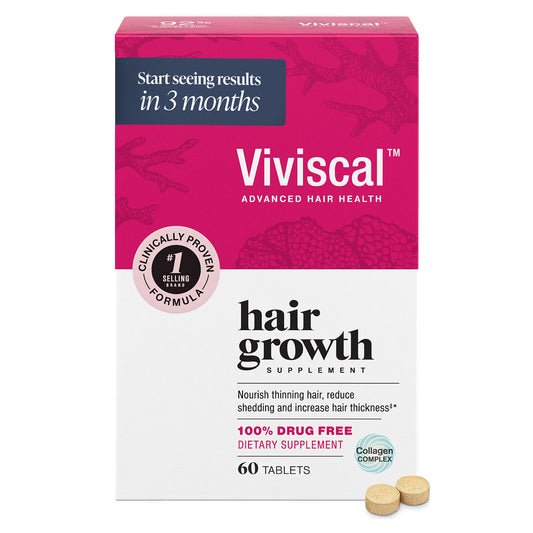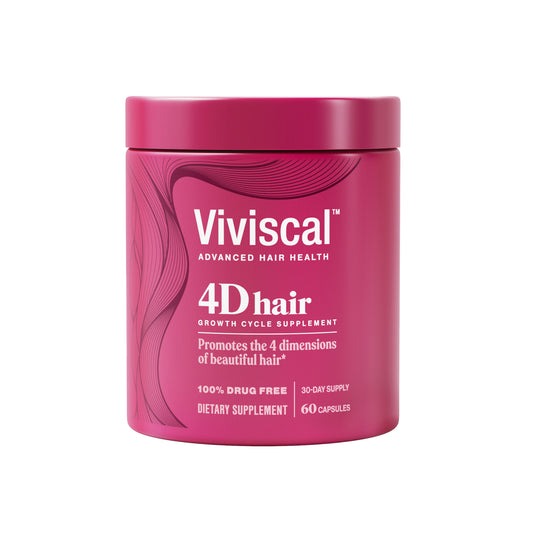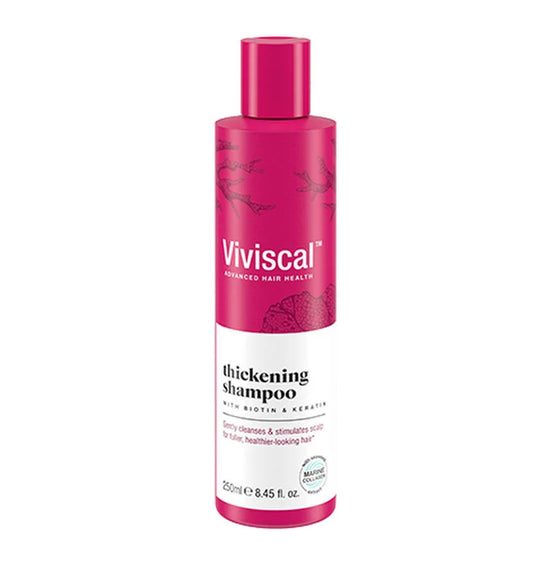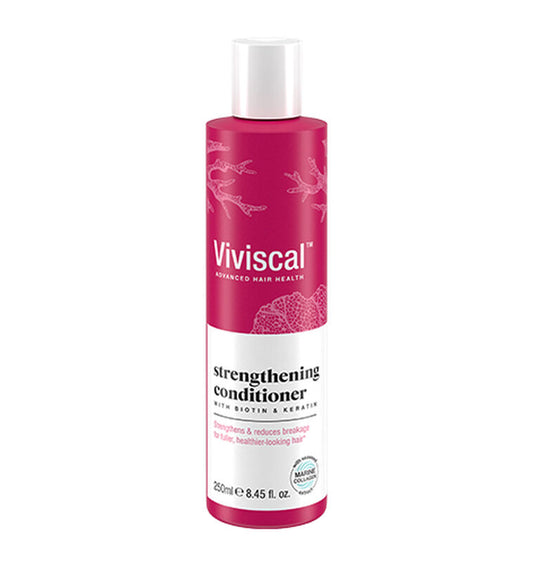In honor of National Hair Loss Awareness Month, we’re breaking down the common causes of hair thinning in women—and what you can do about it. For some, hair thinning can be due to stress or a recent childbirth; for others, there are health conditions.
But first things first: if you are worried about hair loss, you should always speak with your healthcare professional. They are in the best position to diagnosis the reason behind hair loss and provide guidance with any hair loss concerns.
What Are the Signs of Hair Loss in Women?
Some of the signs of hair loss in women include excessive shedding and thinning around the crown; in short that you are shedding more hair than expected. Hair loss in women can take many forms.
Hair shedding is part of the normal, healthy hair cycle, where our hair follicles go through a process to grow, extend and then shed hair. The regular hair cycle takes place over several years. So, every follicle on your head is somewhere in the hair cycle at any moment.
Now that you know what to look for, the next step is understanding what causes hair loss in women so you can understand why this is happening.
Causes of Hair Loss in Women
What Causes Hair Loss?
Hair loss is caused by a variety of factors including components like genetics, hormones, stress, age, medications, as well as many other factors that can impact hair loss, such as the following:
Stress and Hair Loss:

Stress can have many negative impacts on our body, including as mentioned above, on our hair. While you may not be able to completely remove stress from your life, the good news is there are several ways to minimize its impact by handling it better.
Stress reduction ideas to try include:
- Meditation
- Being active
- Playing with pets
- Creating art
- Connecting with friends
- Journaling
Different techniques work for different folks, so it’s okay to try out a few to see what works best for you.
Aging and Hair Loss:
Aging can bring changes to our bodies and our hair. While you can’t stop aging, if you understand the changes that may happen as we age, you can be best prepared on how to deal with it.
What Age Do Females Start Losing Hair?
Depending on the cause, hair loss can happen at any age in women. With androgenetic alopecia, hair loss tends to be first noticed during the menopausal time frame, but officially can start any time after puberty.
Nutrition and Hair Loss:
Eating a nutritious diet can be key to help ensure you have the nutrients you and your hair need every day. Your hair needs a variety of nutrients to grow.
The best way to get these nutrients is by eating foods that are nutrient-dense. This means they provide a lot of nutrition in every bite. Prioritize eating foods like:
- Fruits and vegetables
- Lean proteins
- Beans
- Lentils
- Whole grains
- Dairy products
These are all great sources of the key nutrients that your body needs.
What is the most common cause of female hair loss?
The two most common causes of hair loss in women are telogen effluvium (often stress-related) and androgenetic alopecia (hereditary). Excessive hair shedding is considered as hair loss. There are two common types of hair loss in women:
Telogen Effluvium
This type of hair loss can be stress related.
Typically, a stressful event triggers your hair growth cycle to jump ahead a step in the cycle. This means that many hairs fall out much earlier than they regularly would.
While it can feel scary when it happens, hair loss tends to reverse and recover in a few months, as the stress is removed.
Postpartum Hair Loss
Postpartum hair loss is considered telogen effluvium. After months of pregnancy and increased hair growth and retention, the body has to adjust to a major change as the baby is born. This can result in postpartum hair loss a few months after the baby was born and will usually resolve a few months later.
How to Prevent Postpartum Hair Loss?
While it can be frustrating and stressful to have hair loss a few months after giving birth, unfortunately, it can’t be prevented. It’s part of the natural process that your body goes through with all the big changes and developments after being pregnant.
However, maintaining a healthy lifestyle, such as eating nutritious foods and using gentle personal care products to take care of your hair and scalp can help you get through it.
Androgenetic Alopecia
This type of hair loss is part of the aging process for many women. Androgenetic Alopecia typically begins with a widening of the part and thinning in the crown of the head. It is hereditary, which means that it passed down in families.
Worried That You Are Experiencing Hair Loss?
If you notice hair on your brush, be reassured--it’s completely natural to shed some hairs every day. When it feels like you are losing more than normal, it’s understandable to worry about hair loss.
Learning about the hair growth cycle can be helpful to understand why hair shedding is natural, and to be able to identify when there is a problem to discuss with a healthcare professional.
How to best support your thinning hair:

While your hair may be thinning, there are plenty of ways you can try to help support your hair.
Hair care products matter
It’s helpful to choose hair care products that are specifically designed for thinning hair. These products are created to support your hair.
Choose a hair thickening shampoo and a lightweight moisturizing conditioner to help promote your hair looking fabulous.
Choose a hair growth supplement
Viviscal offers two fantastic hair growth supplements to support your hair.
- Viviscal Hair Growth Supplement: just 2 tablets every day are scientifically proven to nourish thinning hair and promote existing hair growth.*
- Viviscal 4D Hair Growth Cycle Supplement: a 4-in-1 hair supplement for fullness±, strength, shine, and nourishment.*
Protect your scalp from the sun:
The skin on top of your head needs TLC as well. Protect it from the UV rays of the sun, as well as take care of your scalp health. Taking care of your scalp helps to support your hair follicles that your hairs grow from.
Be gentle with your hair:
Thinning hair needs a gentle touch. Limit how much strain you put on your hair. You can reduce the frequency of using hairstyles that pull on your hair, and you can also decrease the use of heat tools.
Use Hairstyles Designed for Thinning Hair
If you are finding your hair thinning, no matter the reason, you can use several styling tricks to help minimize the look of the thinning. Check out these hairstyles that help thinning hair look thicker.
Using hair color to help your hair look thicker can also work wonders.
Stay Informed About Women’s Hair Loss
While thinning hair and hair shedding may feel scary, know that Viviscal brand of hair growth supplements and hair care products has the information and tools to help you.
Keep in mind that your healthcare professional is always your best resource for medical advice specific to your needs, especially since sudden hair loss can be a sign of an underlying medical condition that could require treatment.
Brought to you by the Viviscal™ nutrition experts.
±Due to less shedding
*These statements have not been evaluated by the Food and Drug Administration. This product is not intended to diagnose, treat, cure or prevent any disease.
